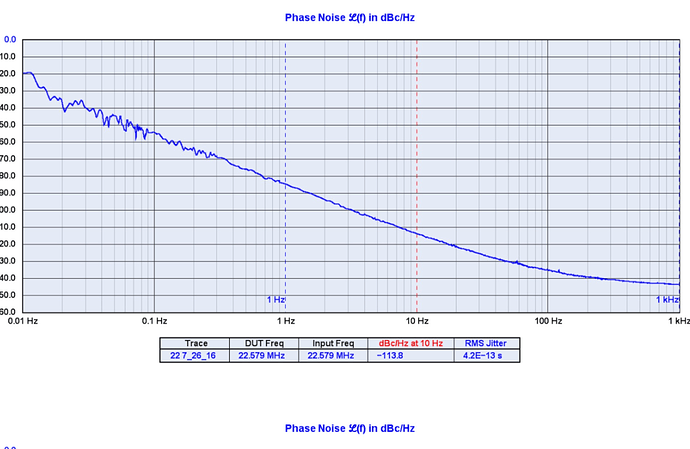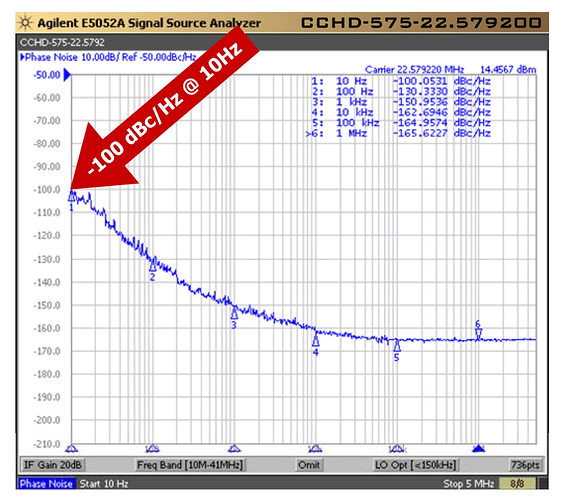If it’s so easy, why are there so many consistent reports of better SQ from a wide variety of DACs even at high price points when fed with AES or I2S. Yes, I know, all those designers of multi-$K DACs must be cheapskates or incompetents. Not.
I’m not saying USB is the holy grail, I’m saying putting the USB interface in a separate box, and adding a plethora of additional jitter causing steps into the signal path isn’t the solution.
Jitter is the least of one’s worries with any decently clocked sources, which anything worthwhile is these days. Electrical interference from switching, power, and current leakage are much bigger issues. For my Yggy, I use an Auralic Aries that bypasses USB completely. For my Spring KTE 3, I use a SU-1, but I’d be happy to bypass USB completely if there was an I2S-output Aries equivalent. According to careful tests done by someone else, the KTE 3 does slightly better with I2S with a very good clock (which the SU-1 provides) than with AES, but I’ve not have had the time or patience to test this myself (even though I have all the gear to do so in hand). In my hearing, SU-1 I2S improves over USB for the KTE 3 (microRendu+LPS-1 source), and Aries AES improves over microRendu+LPS-1 USB for the Yggy. Not by a lot, but noticeable in both cases, mainly in blacker backgrounds and better instrument separation.
The quality of the clock is irrelevant if loads of jitter is introduced between the clock and the DAC board. What matters is the jitter right at the cusp of the conversion to analog. The closer the master clock is to the DAC board the better. LVDS sender/receiver chips add loads of jitter. So do the connections and cables. All the high end companies are ditching external boxes and going with internal Ethernet endpoint boards. What manufacturers did in the past is not the future.
The fact the SU-1 is an improvement to the Holo is only a testament of the mediocre USB implementation inside the DAC. $5-$10 more into the BOM and they could smoke the SU-1 with the internal interface. But how do you sell people more boxes if you do that?
Could you quantify “loads of jitter”? Credible observers and lab tests show very low levels of jitter for some of the configurations you besmirch with a broad brush. “High-end” is often a way to make gullible people pay premium for alleged differences that matter zilch.
Pickup one of these machines and do some of your own testing.
https://www.microsemi.com/products/timing-synchronization-systems/test-measurement/test-sets/5125a
It doesn’t take much to turn a killer clock into a dud. LVDS sender/receiver chips alone add several picoseconds of jitter. So do the connections, cable and mile of PCB traces and connections inside the DAC. What good is a femtosecond clock if you add 400 picoseconds of jitter between it and the DAC? You’d get better results with a garbage clock located a few CM’s from the DAC board.
You must be pulling my leg. 400 picosec period = 250MHz. Are you claiming that frequency range has anything to do with audio? Even bat audio?
What matters is close in phase noise. Within 10hz from the carrier frequency. I was just using that as an example because that’s how misleading manufacturers like to advertise their clocks to laymen who are clueless. “Femto clocks”
Great explanation of what matters with jitter for digital audio can be found here:
I know, but the phase noise in that case is still way, way beyond anything conceivably audible, as thinking of the jitter in terms of frequency makes very clear (and I read my zeros wrong, way too late, the frequency is 2.5GHz, of course!). Mechanical and spike train uncertainty in the auditory system are several orders of magnitude greater than that. A 400 psec shift maps to 0.13 microns in sound wave shift at room temperature. If that’s relevant to audio, I give up.
Read the PDF I shared. Probably the clearest explanation of what matters on the internet. Experience designing this stuff helps as well.
Nothing I didn’t know there. No numbers. No relevant graphs. No evidence that 400 psec matter at all to audio. Anyway, a colleague who wrote the most up-to-date book on auditory signal processing works out at the same gym, a new topic for locker room chitchat.
He claims to not use any clocks that have over 0.5ps jitter. And -130dbc@ 10hz phase noise. He’s being quite anal, but true if you’re seeking extreme quality. Although he’s using 11Mhz clocks because he’s not talking about supporting high resolution audio. Very hard to find a 22Mhz or higher clock with 10hz phase noise that low. Here’s the actual phase noise of the lowest end clocks we use. But it’s located 3cm from the DA conversion point, with no connections or even stubs in the path. So the performance is retained right up to the DAC chip pin.
Here’s the Crystek 575 in the SU-1 for comparison. Although it goes through a LVDS sender, connection, cable, connection, LVDS receiver, mile of pcb traces and internal connections, DAC
Just catching up on this interesting thread. You said that, “For my Yggy, I use an Auralic Aries that bypasses USB completely.” If you look inside your Aries at the foundation of your AES/EBU output is an internal USB XMOS receiver.
SONORE computer audio - Rendu | microRendu | Sonicorbiter SE
The clock issues with this approach are well documented. There is only one clock on that board and it’s frequency is not the correct one for 44.1x and 48x audio playback. In order to generate the correct clock frequencies for the audio being played it has to interpolate them from the on board clock. Just because it’s i2s doesn’t make it good. However, this solution will play music.
SONORE computer audio - Rendu | microRendu | Sonicorbiter SE
Thanks Jesus. So when is the Sonore ethernet input & I2S output Roon endpoint coming ! 
We use to make a Ethernet to SPDIF/i2s source and while the people who owned them loved them the general interest in the product was limited. I have a DIY DAC with a Sonore i2s input interface and the similar DIY DAC with a Sonore Audiobyte USB interface. The USB based DAC is a clear winner. FYI none of these parts are currently for sale so this is not advertisement and rather just information.
SONORE computer audio - Rendu | microRendu | Sonicorbiter SE
Understood but as per my OP, this is about just ethernet input and I2S output. No USB and no SPDIF at all.
Unfortunately most of the I2S sources you see today from Chinese companies aren’t doing things right. The Sonore Signature Rendu was an example of things done right, but I2S wasn’t as much of a buzzword at the time it was for sale. Now the 2 originators of I2S over LVDS (who did things proper) MSB and PS Audio, have both gone to internal Ethernet endpoint boards. Finally now that they moved on to better solutions, the masses are into I2S as the Chinese companies who are doing it wrong are pushing it hard. To do it right you need to slave the transport to the DAC’s master clock. But even then, it won’t hold a candle to a internal endpoint board connected I2S CMOS direct over short distances.
Shhhh!! It will sound better if he doesn’t know that! 

